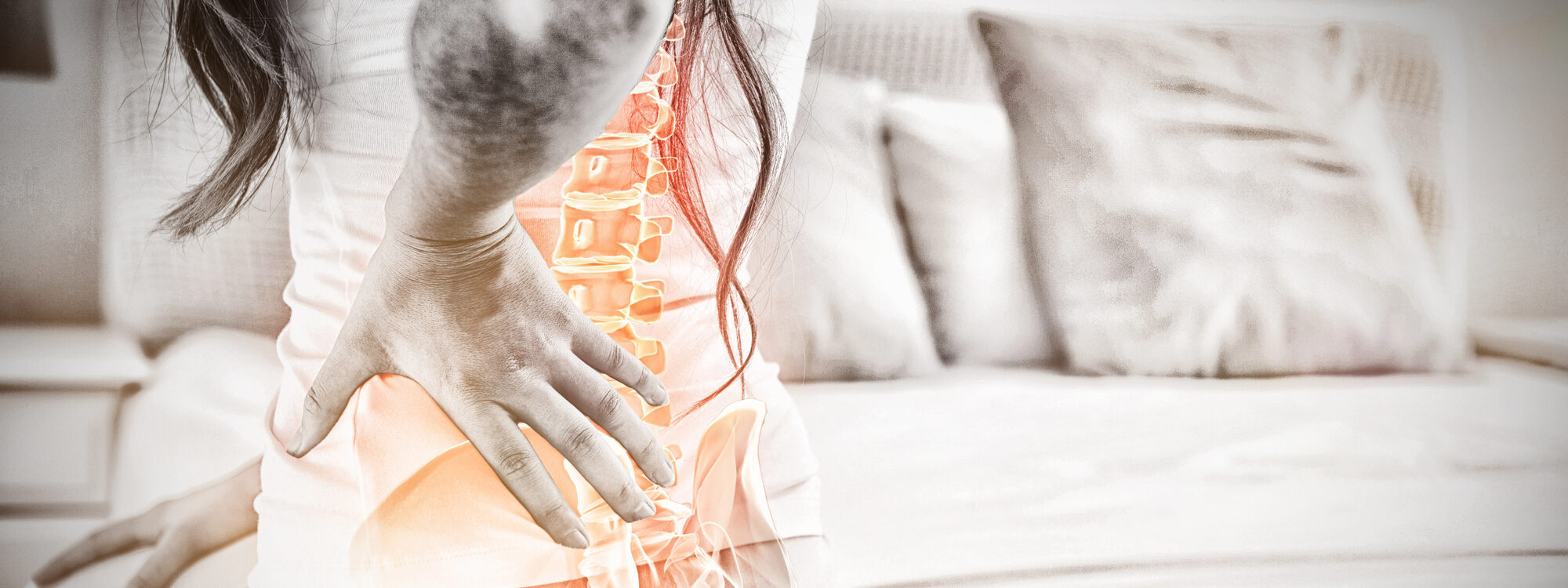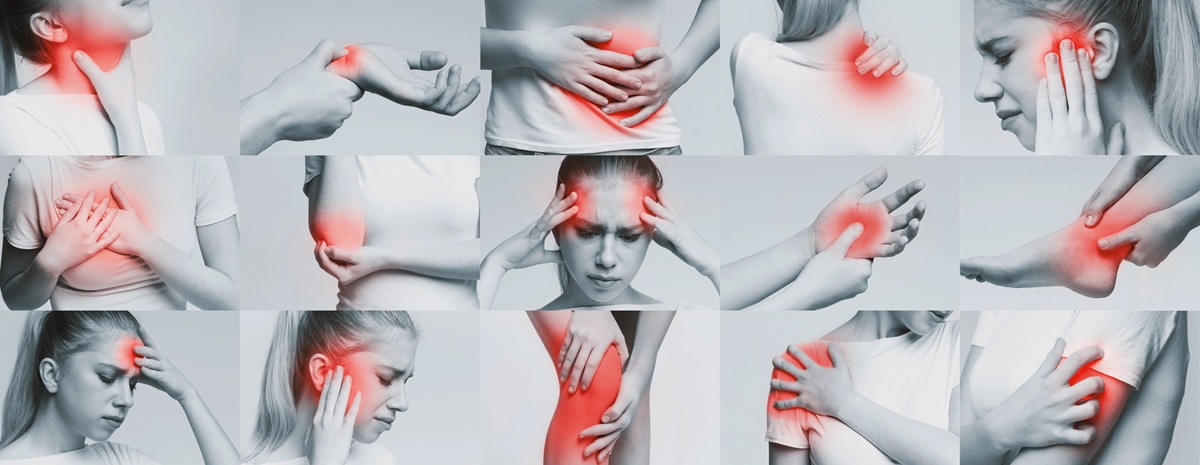June 25, 2025

In this third installment of our series, The Care Gap – Rethinking Women’s Health in Medicine, we turn our focus to pain management, an area where women unfortunately face too many challenges in getting adequate treatment.
Women face a paradoxical situation in pain management: Despite overwhelming evidence demonstrating that women experience more pain and are more frequently diagnosed with chronic pain syndromes [1,2,3], their suffering is often minimized by healthcare providers. This dismissal leads to a troubling outcome: women typically receive fewer and less effective pain treatments compared to men [4]. This is not merely perception − several studies confirm this:

In the face of chronic pain, the situation is particularly onerous when a woman’s only definitive symptom is pain and diagnosis is uncertain. In these cases, women often get labeled as malingering, drug-seeking or in need of psychiatric treatment rather than pain management [4].
Unfortunately, women are disproportionately affected by pain from fibromyalgia, arthritis, IBS, and neuropathologies [3,13,14,15], and of course face pain that men never can experience from endometriosis, interstitial cystitis, vulvodynia, ovarian cysts, and rare and potentially life-threatening conditions like ovarian torsion and ectopic pregnancy.
The face of pain can be deceptive. Women with chronic conditions like endometriosis and fibromyalgia have mastered the ability to appear composed while enduring pain levels that would bring others to their knees [16]. Just watch the videos of men vs women wearing “period cramp simulators”– while these demonstrations may be humorous to some, our extraordinary resilience, born out of necessity, becomes a double-edged sword in medical settings. Women’s ability to function through devastating pain (out of necessity) paradoxically undermines their credibility. Medical professionals see a patient who can walk and talk, while beneath the surface, the woman is in agony.
Pain scales are based on 0 being “no pain” and 10 being “the worst imaginable pain”. When a level “10” for a woman on the pain scale is experiencing a forceps delivery without anesthetic, debilitating back pain would come in at level “8”, yet a man would likely rate the same back pain as “unimaginable” (aka 10+). She’s actually feeling MORE subjective pain, but relative to other experiences like endometriosis, she will underrate it. This cruel paradox perpetuates a cycle where women’s experience and remarkable adaptation to chronic pain are used as evidence against them, casting doubt on their suffering rather than highlighting its severity. There is a terrible irony in the fact that women have lower pain thresholds and report pain more frequently than men [14], but are better able to hide it. When a woman tells a doctor the pain is unbearable, it isn’t a plea for attention – it’s a desperate signal that something is profoundly wrong.

Sadly, pain treatment is yet another area where decades of preclinical research conducted primarily on male animals has profoundly impaired the development of more effective pain management for women. Recent work analyzing mechanistic studies of both acute and chronic pain and analgesic treatment on animals of both sexes has found that in 72% of cases, treatments only worked on males [2]. Recent research in humans supports this. Using an elegant study design to investigate how internal pain-control mechanisms are engaged in men and women, researchers found that men leverage the body’s internal opioid system for pain relief, but women do not [17]. This may explain why women have reported higher post-operative pain scores despite receiving the same level of opioid treatment as men [18]. Women also report more side-effects form opioid medications, likely due to sex differences in liver enzyme expression that impact metabolism [19].
Pain is complex, spanning an entire multifaceted field of study from physiology to cognition. Factors that intersect with sex, such as age, hormonal status, duration and type of pain, mental health, duration of treatment and personal control over dosage can all impact treatment efficacy. For example, when women can self-administer morphine for pain control they tend to use less than men [20], highlighting how a sense of self-efficacy can alter our perception of pain. These findings underscore the urgent need for more inclusive research practices and a deeper understanding of how the full spectrum of sex differences and environment interact to influence pain perception and treatment outcomes. They also emphasize the importance of patient-centered approaches that actively involve patients in treatment decisions: when we feel empowered, we are better able to cope with pain.
For many women, challenges in obtaining effective pain treatment are compounded by intersecting forms of discrimination in healthcare, where women (and particularly those from marginalized groups) are disproportionately dismissed or misdiagnosed. In our next article, we will explore how intersectionality impacts treatment in healthcare systems and examine the phenomenon of medical gaslighting, a troubling practice that leaves many women questioning their symptoms, their reality, and their worth.
References
[1] P. I. J. Musey et al., “Gender differences in acute and chronic pain in the emergency department: results of the 2014 Academic Emergency Medicine consensus conference pain section.,” Acad. Emerg. Med. Off. J. Soc. Acad. Emerg. Med., vol. 21, no. 12, pp. 1421–1430, Dec. 2014, doi: 10.1111/acem.12529.
[2] J. S. Mogil, “Qualitative sex differences in pain processing: emerging evidence of a biased literature.,” Nat. Rev. Neurosci., vol. 21, no. 7, pp. 353–365, Jul. 2020, doi: 10.1038/s41583-020-0310-6.
[3] N. R. Osborne and K. D. Davis, “Sex and gender differences in pain.,” Int. Rev. Neurobiol., vol. 164, pp. 277–307, 2022, doi: 10.1016/bs.irn.2022.06.013.
[4] A. Samulowitz, I. Gremyr, E. Eriksson, and G. Hensing, “‘Brave Men’ and ‘Emotional Women’: A Theory-Guided Literature Review on Gender Bias in Health Care and Gendered Norms towards Patients with Chronic Pain.,” Pain Res. Manag., vol. 2018, p. 6358624, 2018, doi: 10.1155/2018/6358624.
[5] E. H. Chen et al., “Gender disparity in analgesic treatment of emergency department patients with acute abdominal pain.,” Acad. Emerg. Med. Off. J. Soc. Acad. Emerg. Med., vol. 15, no. 5, pp. 414–418, May 2008, doi: 10.1111/j.1553-2712.2008.00100.x.
[6] K. L. Thurston, S. J. Zhang, B. A. Wilbanks, R. Billings, and E. N. Aroke, “A Systematic Review of Race, Sex, and Socioeconomic Status Differences in Postoperative Pain and Pain Management.,” J. perianesthesia Nurs. Off. J. Am. Soc. PeriAnesthesia Nurses, vol. 38, no. 3, pp. 504–515, Jun. 2023, doi: 10.1016/j.jopan.2022.09.004.
[7] C. Liddy et al., “Patient-Reported Wait Times and the Impact of Living with Chronic Pain on their Quality of Life: A Waiting Room Survey in Chronic Pain Clinics in Ontario, Manitoba, and Quebec.,” Can. J. pain = Rev. Can. la douleur, vol. 8, no. 1, p. 2345612, 2024, doi: 10.1080/24740527.2024.2345612.
[8] eClinicalMedicine, “Gendered pain: a call for recognition and health equity,” eClinicalMedicine, vol. 69, Mar. 2024, doi: 10.1016/j.eclinm.2024.102558.
[9] A. D. Karamesinis et al., “Sex Differences in Opioid Administration After Cardiac Surgery,” J. Cardiothorac. Vasc. Anesth., vol. 38, no. 3, pp. 701–708, 2024, doi: 10.1053/j.jvca.2023.11.044.
[10] L. V Schilter et al., “Gender-based differential management of acute low back pain in the emergency department: A survey based on a clinical vignette,” WOMENS Heal., vol. 20, 2024, doi: 10.1177/17455057231222405.
[11] M. Ukhanova, S. Markwardt, J. P. Furuno, L. Davis, B. N. Noble, and A. R. Quiñones, “Are there sex differences in potentially inappropriate prescribing in adults with multimorbidity?,” J. Am. Geriatr. Soc., vol. 69, no. 8, pp. 2163–2175, Aug. 2021, doi: 10.1111/jgs.17194.
[12] J. Wu, E. Trahair, M. Happ, and J. Swartz, “TikTok, #IUD, and User Experience With Intrauterine Devices Reported on Social Media.,” Obstet. Gynecol., vol. 141, no. 1, pp. 215–217, Jan. 2023, doi: 10.1097/AOG.0000000000005027.
[13] L. LeResche, “Epidemiology of Pain Conditions with Higher Prevalence in Women,” Apr. 01, 2013, Oxford University Press. doi: 10.1093/med/9780199796410.003.0001.
[14] R. Casale et al., “Pain in Women: A Perspective Review on a Relevant Clinical Issue that Deserves Prioritization.,” Pain Ther., vol. 10, no. 1, pp. 287–314, Jun. 2021, doi: 10.1007/s40122-021-00244-1.
[15] C. M. Johnson and G. E. H. Makai, “Fibromyalgia and Irritable Bowel Syndrome in Female Pelvic Pain.,” Semin. Reprod. Med., vol. 36, no. 2, pp. 136–142, Mar. 2018, doi: 10.1055/s-0038-1676090.
[16 A. G. Qureshi et al., “Diagnostic Challenges and Management of Fibromyalgia.,” Cureus, vol. 13, no. 10, p. e18692, Oct. 2021, doi: 10.7759/cureus.18692.
[17] J. G. Dean et al., “Self-regulated analgesia in males but not females is mediated by endogenous opioids,” PNAS Nexus, vol. 3, no. 10, p. pgae453, Oct. 2024, doi: 10.1093/pnasnexus/pgae453.
[18] N. Sodhi, A. Qilleri, C. Aprigliano, and J. R. Danoff, “One Size Does Not Fit All: Women Experience More Pain Than Men After Total Knee Arthroplasty.,” J. Arthroplasty, vol. 40, no. 4, pp. 880–886, Apr. 2025, doi: 10.1016/j.arth.2024.09.028.
[19] G. S. Lopes et al., “Sex differences in type and occurrence of adverse reactions to opioid analgesics: a retrospective cohort study.,” BMJ Open, vol. 11, no. 6, p. e044157, Jun. 2021, doi: 10.1136/bmjopen-2020-044157.
[20] M. Niesters et al., “Do sex differences exist in opioid analgesia? A systematic review and meta-analysis of human experimental and clinical studies.,” Pain, vol. 151, no. 1, pp. 61–68, Oct. 2010, doi: 10.1016/j.pain.2010.06.012.